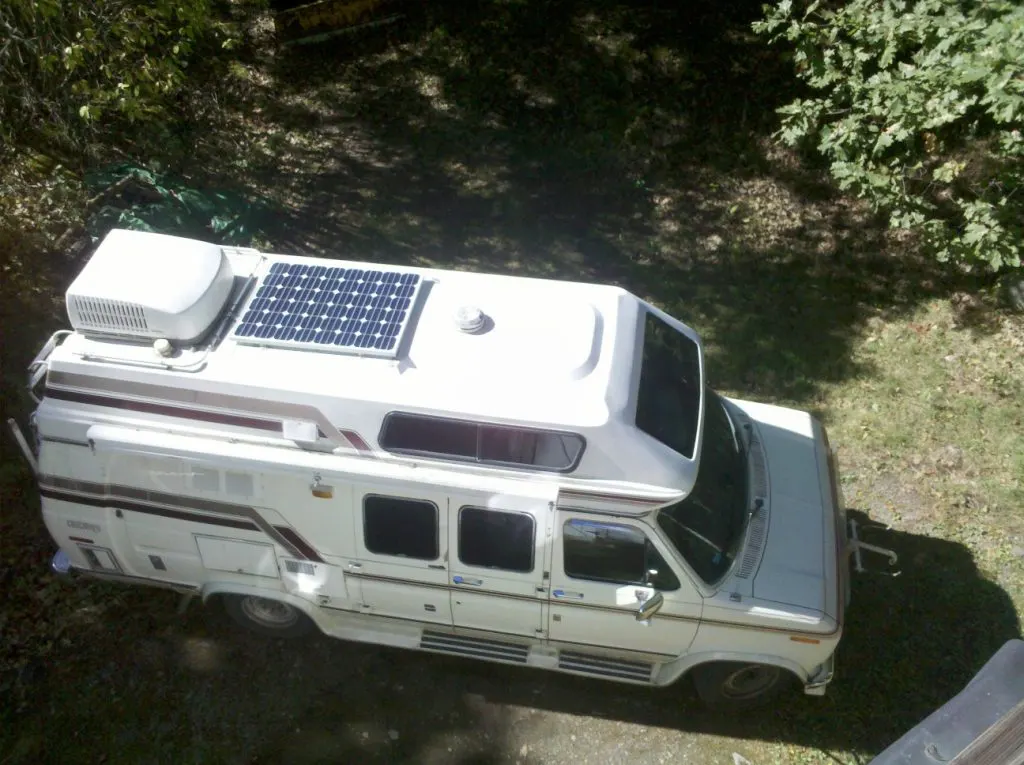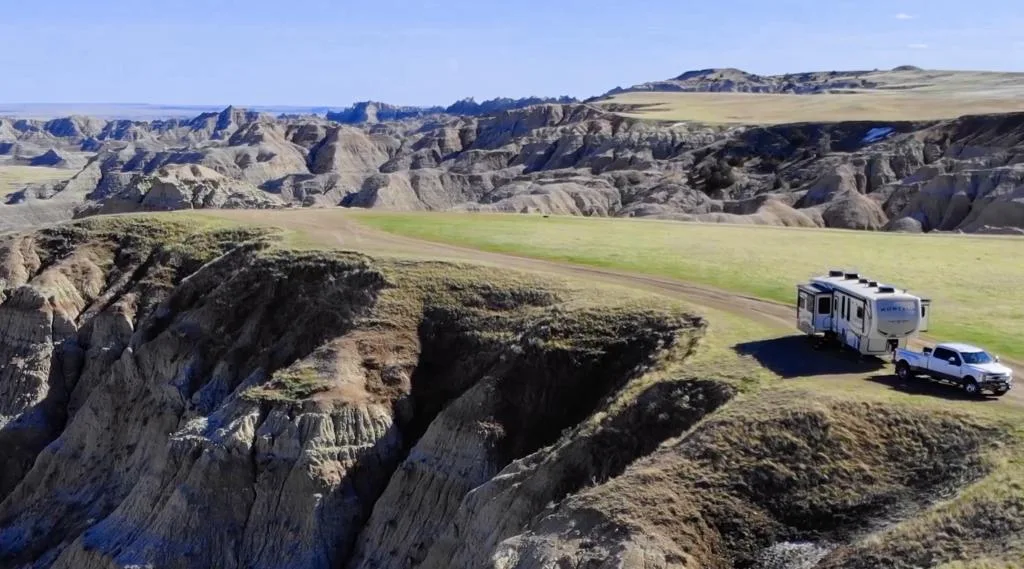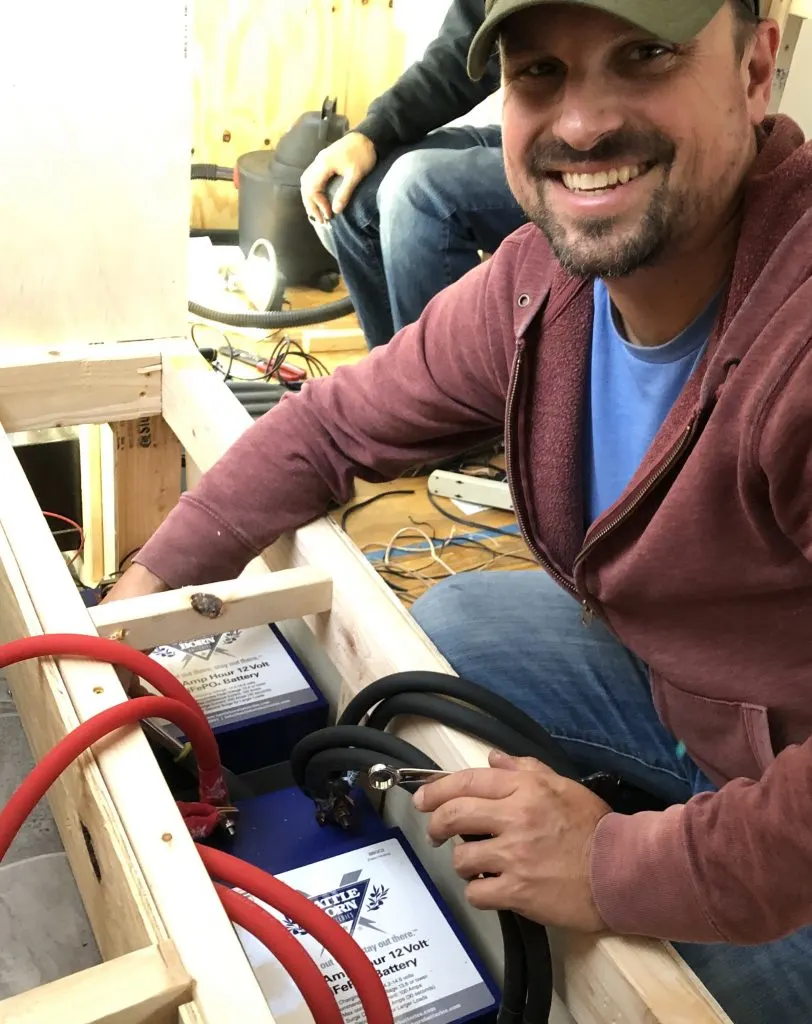Most RV enthusiasts think about adding solar power to their RVs at some point. Endless energy potential, quiet power, and no need for an RV park reservation…those are just a few reasons to upgrade your rig.
However, many travelers may not completely understand their systems. Panels, inverters, controllers, a battery bank; there are lots of moving parts!
Today we’re providing some clarity on the RV solar issue. This article should help you avoid making 5 surprisingly common RV solar power mistakes.

Why Use Solar Power with my RV?
Now, there’s the $64,000 question!
Why is the idea of solar power so popular among RVers?
It must have something to do with shrinking your carbon footprint by using “free” energy. Or maybe it’s the fact that it is considered “clean energy” that makes it appealing. I’m sure many also consider adding solar power as a way to increase off-grid capabilities.
Whatever the reason, a solar setup can be a major component in your energy arsenal. Just be sure you educate yourself on how the system is designed and functions.

5 Common RV Solar Power Mistakes
Before you decide upon your RV solar power system, give the common mistakes a look. Learning these may save you a lot of time and money.
Not Understanding RV Solar Power Limits
Make sure you realize your solar system’s limitations.
Environmental limitations might include limited charging capabilities on cloudy days. Dirty panels can also hinder energy absorption.
You will also need to become familiar with how much energy your rig is using. Realize that larger draws on the system, like running an air conditioner or microwave, must usually be mitigated by not running something else at the same time.
And in many cases, you may not be able to run an air conditioner at all.
However, with this mod, ACs run with ease.
If you learn the wattage requirements of your RV’s appliances, large and small, you will be well on your way to understanding just what your solar setup can and cannot power.

Not Having A Powerful Enough System
Many times RVers add solar panels to their rig. You may also purchase an RV that already has a small solar system. In both cases, you may suddenly realize they don’t have the power they need.
100 watts is not going to run your refrigerator, water heater, microwave, computers, etc. all at once.
Do an inventory on how many watts you are actually using a day, then divide that number by 24 to come up with an average number of watts you use in one hour. Then figure how many hours a day you get peak sunlight and multiply that number with the number of watts per hour.
Your product can then be divided by the number of watts your solar panel is rated for. That answer will tell you how many solar panels you should have.

Over-Discharging Batteries
If you are using lead-acid or AGM batteries to collect your solar energy, you should be very careful in keeping their discharge rate above 50% or you may damage the batteries. If this happens where you cannot gather power in any other fashion (like running your motorcoach engine to recharge the batteries or using a generator), then you must stop using power in the RV.
At this point, you may want to consider upgrading to lithium batteries, which allow you to discharge almost 100% of the energy stored in them before requiring a charge, or having one or two back-up energy sources like the generator or plugging into shore power.

Not Using Fuses and Breakers Properly
When solar energy is added to the mix, there are several parts to the system that should have stop-gaps. This will help protect your appliances on the electrical line. Three places in particular should have fuses to do that, and if they are not installed properly or are undersized, they will not be able to do the job correctly, leaving your solar system and your coach jeopardized.
Make sure an inline fuse is placed between the solar panels and the charge controller, another one placed between the charge controller and the battery bank, and a third-placed between the battery bank and the inverter.

Using Lead Acid Batteries
Here’s why you don’t want to use lead-acid batteries for everyday solar applications: Solar systems are collecting power and transferring it to your batteries every time the sun is out. In other words, you are charging and depleting your batteries almost constantly.
Because lead-acid batteries can only safely be discharged to 50% before they are damaged, you are using their limited “charge cycles” several times and shortening the battery’s life much quicker.
Also, lead-acid batteries take much longer than other battery types to recharge. Power to your devices is not available as quickly if you are totally dependent upon solar for your energy needs. Using lithium or even AGM batteries will give you quicker charge times and lower discharge rates and will require virtually no maintenance on your part.
Is Solar Power for You?
Adding a solar system to your camper’s equipment can be a large and expensive proposition, but one that will pay off in great dividends to your power needs.
Just learn all of the system’s parameters and limitations, so that you can have a dependable, well working power generator for years to come.
Discover the Best Free Camping Across the USA
To be honest with you, we hate paying for camping. There are so many free campsites in America (with complete privacy).
You should give it a try!
As a matter of fact, these free campsites are yours. Every time you pay federal taxes, you’re contributing to these lands.
Become a FREE CAMPING INSIDER and join the 100,000 campers that love to score the best site!
We’ll send you the 50 Best Free Campsites in the USA (one per state). Access the list by submitting your email below:
Love your articles, keep it up.
Thank-you so much Kyle. Very informative video and article about solar powering an RV. I’ve been very interested in solar and now have a better perspective on how to apply it in practical approach.
Time to break out the spread sheets!
I have yet to see any article about replacing lead acid batteries with lithium batteries, and any compatibility problems to consider.
wow! I like the articles on solar installment I will be doing mine pretty soon can’t wait to go boondocking I been putting it off way to long I also like that all the RV people are so cool to one another. Your articles have helped me a lot thank you
Very informative and to the point. Thanks
When we bought our Airstream Bambi in 2018, we had the dealer install a 100-watt panel on the roof. Well, we have lots of hail in Colorado. We store the camper outside on our property in the county. The third year we had the camper, we got a nasty hail storm driven by 70+ mph winds. That reduced the roof mounted panel back to its original state of sand (SiO2). We have since bought and use a deployable 200-watt panel which does fine for us. Sure, it’s a bit bulky, but its always there when needed.
Based on that experience, I believe it should be pointed out that roof mounted panels are not the best choice is one lives and stores in a weather-prone location. Besides, when locating on site, usually it’s preferable to part the camper in the shade – just NOT what the panel needs. With the deployable panel, we can part in the shade and place the panel in the sunlight using an extension cable (which came with our Renology Panel).